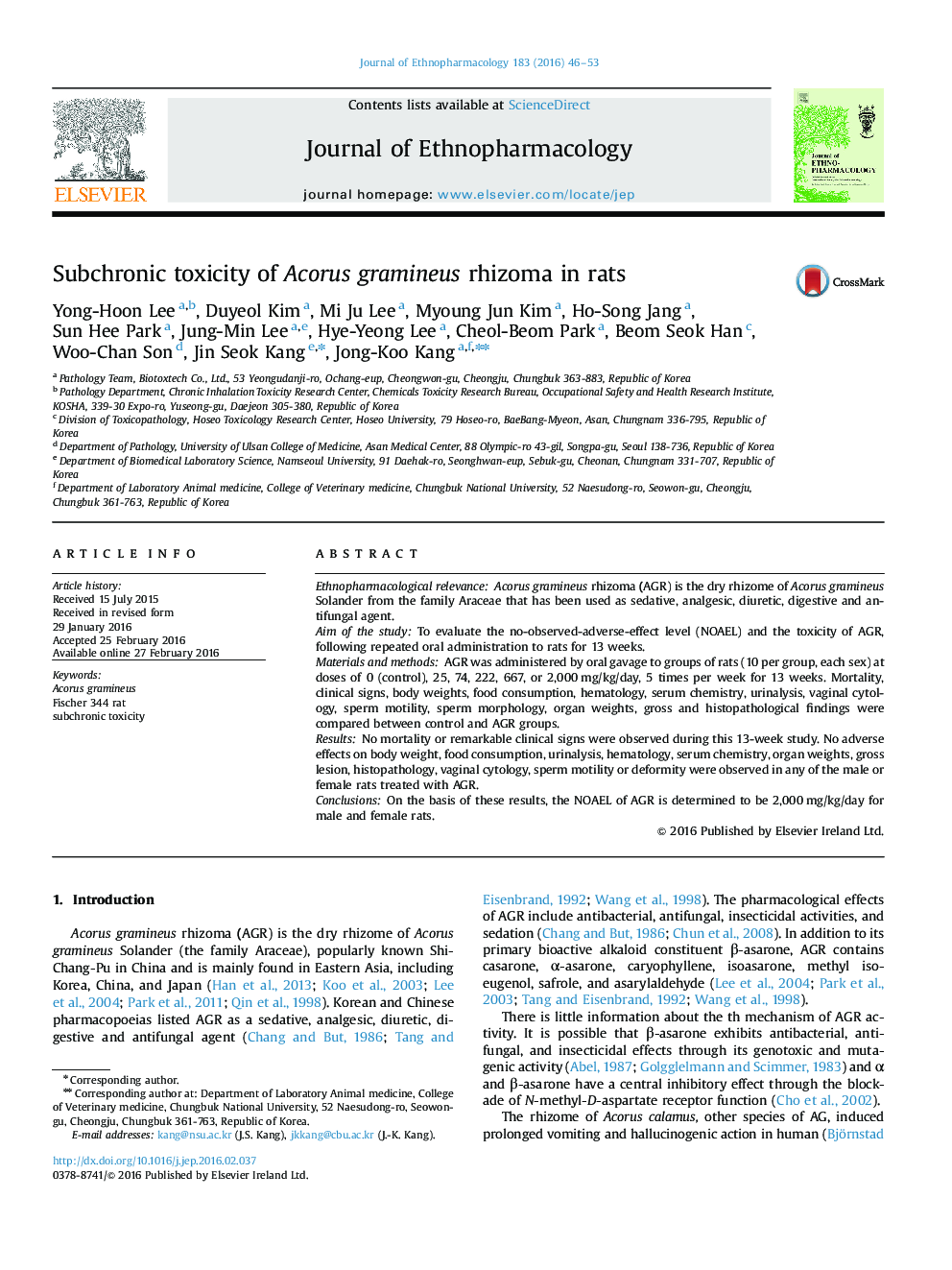| Article ID | Journal | Published Year | Pages | File Type |
|---|---|---|---|---|
| 2544866 | Journal of Ethnopharmacology | 2016 | 8 Pages |
Ethnopharmacological relevanceAcorus gramineus rhizoma (AGR) is the dry rhizome of Acorus gramineus Solander from the family Araceae that has been used as sedative, analgesic, diuretic, digestive and antifungal agent.Aim of the studyTo evaluate the no-observed-adverse-effect level (NOAEL) and the toxicity of AGR, following repeated oral administration to rats for 13 weeks.Materials and methodsAGR was administered by oral gavage to groups of rats (10 per group, each sex) at doses of 0 (control), 25, 74, 222, 667, or 2,000 mg/kg/day, 5 times per week for 13 weeks. Mortality, clinical signs, body weights, food consumption, hematology, serum chemistry, urinalysis, vaginal cytology, sperm motility, sperm morphology, organ weights, gross and histopathological findings were compared between control and AGR groups.ResultsNo mortality or remarkable clinical signs were observed during this 13-week study. No adverse effects on body weight, food consumption, urinalysis, hematology, serum chemistry, organ weights, gross lesion, histopathology, vaginal cytology, sperm motility or deformity were observed in any of the male or female rats treated with AGR.ConclusionsOn the basis of these results, the NOAEL of AGR is determined to be 2,000 mg/kg/day for male and female rats.
Graphical abstractFigure optionsDownload full-size imageDownload high-quality image (195 K)Download as PowerPoint slide
